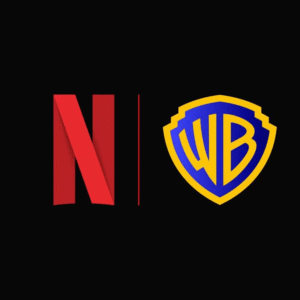Cam Brink of the Sparks Urges Reporters to Help Humanize WNBA Players Ahead of Double Overtime Thriller Against Seattle Storm

LandonBuford.com
Cam Brink, who is a rising star of the Los Angeles Sparks, showed up not only to play basketball last Friday, but also to initiate a larger discussion. Before the Sparks’ gripping double-overtime victory over the Seattle Storm, Brink talked about the importance of media in humanizing athletes, particularly in the WNBA. The sports media world is both reminded and challenged by her heartfelt comments: help elevate the league with stories and sincerity, not just with scores and stats.
The Value of Storytelling in Women’s Sports
During her pre-game availability, Brink was truthful when asked how the media could help the WNBA continue to grow and become more visible. Her response was refreshingly honest:
“That’s a great question. I don’t know, just continue to be honest, and you know, just having good intentions, just, you know, taking our word for what it is at face value. You know, just growing, the league that’s a great question, though. I think you guys are doing a great job.”
WNBA players are increasingly expressing the belief that authenticity, integrity, and storytelling are equally crucial to the game’s future as broadcast rights or ticket sales. Brink’s message is clear: reintroduce the human to the highlight reel.
Cam Brink: More Than Just a Second-Year Vet
Cam Brink, the second overall pick in the 2024 WNBA Draft, has impressed the Los Angeles Sparks. Not only is she one of the league’s top shot blockers and rebounders, but she’s also becoming a vocal advocate for athletes to be seen as complete and complex individuals. Her thoughtfulness off the court matches the tenacity she displays on the court, as she frequently speaks up about mental health, identity, and the significance of media in athlete empowerment. Despite the high expectations of her rookie season, Brink remains grounded and open. Her message’s power lies in the combination of humility and strength, which is why media coverage must go beyond the surface.
The Human Behind the Highlight: Why It Matters
The definition of women athletes is often limited to their athletic output or superficial narratives. The missed opportunity is not only a disservice to Brink and her peers, but also a missed opportunity.
Humanizing players means:
Telling stories about their lives outside the arena.
Highlighting personal struggles, growth, and resilience.
Exploring what motivates them, what challenges they face, and who they are beyond the uniform.
WNBA Coverage: Where We Are and Where We Must Go
In the past few years, the WNBA has made tremendous improvements. Interest is high due to the expansion buzz and surging attendance and viewership. However, the media coverage hasn’t always been consistent. While outlets report more on standout performances and viral moments, the more complex stories, like the ones Cam Brink is requesting to be told, are still often pushed to the sidelines.
To capture this moment, journalists are required:
Prioritize access: Spend time with players outside of postgame scrums.
Ask deeper questions: Go beyond box scores to uncover personal journeys.
Focus on long-form features: Provide the space necessary to explore identity, activism, and real-life challenges.
Diversify voices: Elevate women and people of color in sports journalism to ensure authentic perspectives.
Brink’s Pre-Game Words Foreshadow a Night of Heart
The Sparks’ double-overtime epic against the Seattle Storm was a game that required the league’s most famous heart, hustle, and resilience, and Brink’s call to humanize players came just hours before it. The game was full of storylines:
Clutch performances from veterans.
Breakout moments for rookies.
Grit, emotion, and camaraderie encapsulate everything great about the WNBA.
Player stories shine brightest in these games if the media are prepared to tell them.
How Reporters Can Step Up: Actionable Changes
The press received guidance from Brink’s comments. Reporters and media outlets can contribute to the WNBA’s growth truly.
1. Center Players as People First
Start every story from the perspective of the athlete as a human being. Ask about their emotions, thoughts, and dreams, not just what went well or poorly on the court.
2. Consistency Over Virality
Avoid waiting for a viral moment or scandal to cover a player. Ensure that ongoing coverage builds trust and depth over time.’
3. Amplify Player Voices
The players should speak for themselves. Use long-form interviews, Q&A formats, and behind-the-scenes content to give them full control over their narratives.
4. Create Space for Vulnerability
The media should have good intentions, as Brink suggested. It’s about creating a safe space for players to feel comfortable discussing sensitive topics like injury recovery, family struggles, mental health, or social justice.
5. Educate and Inform
Inform audiences about the unique aspects of the WNBA, which include its pace, physicality, player movement, coaching strategies, and culture. Educating fans about the ecosystem they live and work in is part of humanizing players.
A Generation Demands More: The Brink Effect
Cam Brink is an example of a new generation of athletes who are resisting the temptation to focus on headlines. She is paving the way for an era where WNBA players are not only seen, but also heard, felt, and known, just like Caitlin Clark, Angel Reese, and Aliyah Boston.
The challenge facing reporters now is to become better storytellers.
Conclusion: Elevate the Player, Elevate the Game
For the WNBA to achieve its full potential, it requires partners, not just promoters. Media should be an integral part of the movement, not just spectators. The call to action made by Cam Brink before Friday’s double-overtime victory was not just about that game. The focus was on all the upcoming games and the players who make them worthwhile to watch. The media has the final say.
Landon Buford is an accomplished sports and entertainment journalist based in Richardson, Texas, with over a decade of experience covering the NBA, WNBA, NFL, WWE, MLB, and the entertainment industry. Known for delivering high-impact stories and headline-making interviews, Buford has earned a global audience through content that blends insider access with compelling storytelling.
He previously served as director of editorial and brand communications at PlayersTV, where he helped shape the platform’s editorial voice and brand identity. He is also the founder and editor-in-chief of LandonBuford.com—an independent outlet with more than 1.6 million views and syndication from major platforms including Bleacher Report, Sports Illustrated and Yahoo Sports. Buford’s interviews with stars like Gary Payton, Kevin Durant, Mark Cuban and Chris Paul showcase his talent for meaningful, in-depth conversations.
His bylines have appeared in Sports Illustrated, Forbes, Heavy.com, Meta’s Bulletin and One37pm, where he has contributed exclusive interviews, breaking news and cultural insights. At Heavy.com, his work drew more than a million views in just eight months, and at One37pm, it contributed to record-breaking traffic numbers.
His work highlights the intersection of sports, fashion, music, and entrepreneurship—showcasing how athletes and entertainers use their platforms to inspire change, influence trends, and shape culture beyond the game. Landon has interviewed a wide range of figures from the NBA, NFL, and entertainment industries, consistently bringing authentic voices and untold stories to the forefront.
In addition to his journalism, Buford is an entrepreneur and content creator, dedicated to amplifying diverse narratives and driving meaningful conversations across media platforms. His passion for storytelling, culture, and innovation continues to make him a respected voice in the evolving landscape of sports and entertainment media.







